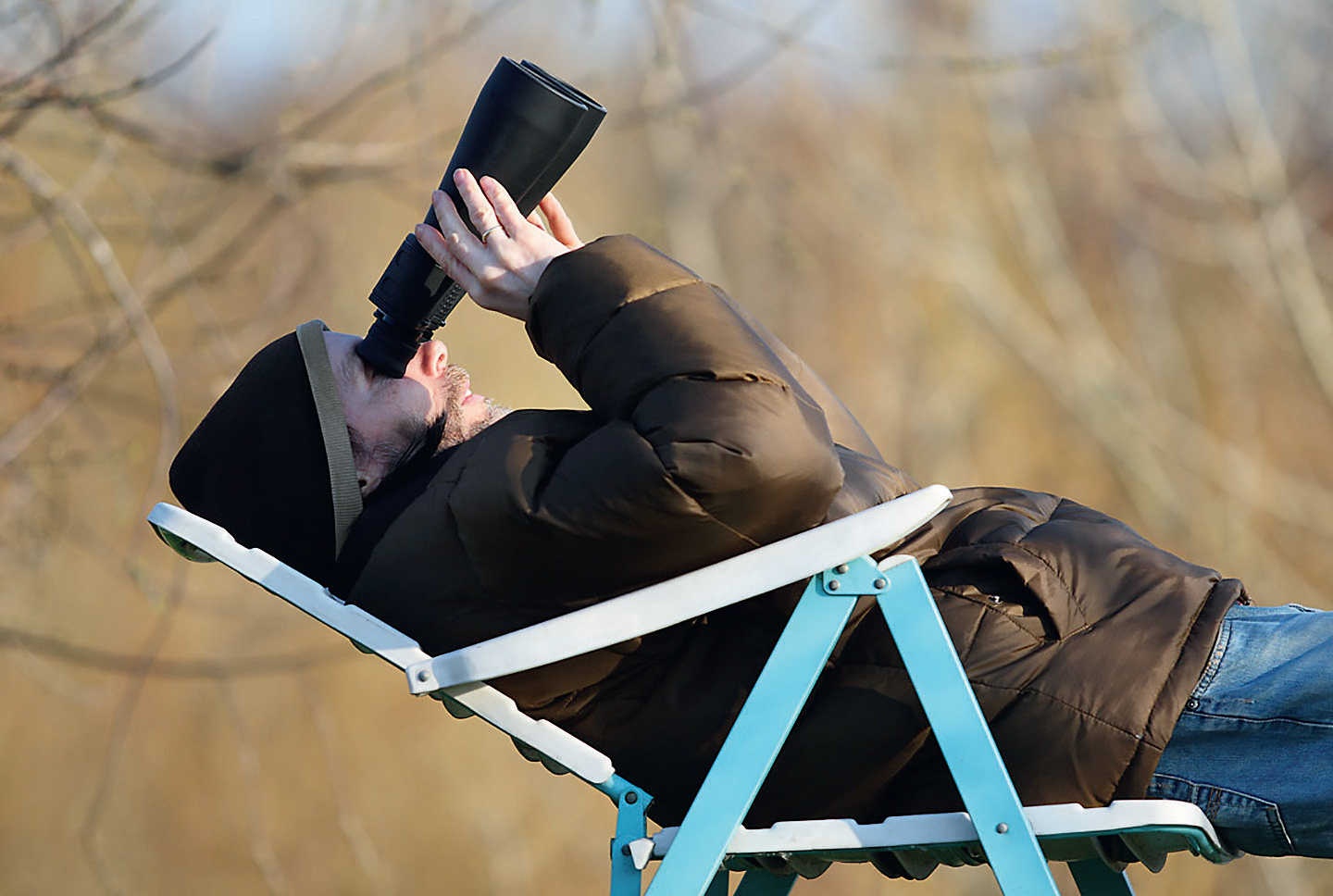You see more with two
You don’t always need to have a telescope: observing is relaxed with two eyes, and some objects only show their true splendour through binoculars.
 The Pleiades is particularly impressive cluster to observe with binoculars. Rudi Dobesberger
The Pleiades is particularly impressive cluster to observe with binoculars. Rudi DobesbergerBinoculars as an entry-level instrument
Starting a new hobby does not always have to be especially expensive. For example, you can observe the sky perfectly well with small instruments, and binoculars are a perfect example of a small-format telescope.
And as an entry-level instrument, they are a serious means of observation. They can reveal many exciting deep sky objects such as open clusters, globular clusters, nebulae and galaxies. It is also possible to observe sunspots, the Moon and comets. Indeed, binoculars will represent many objects more impressively than a "one-eyed" telescope due to their large field of view and the perceived three-dimensional properties of the image. For the beginner, it is also a good learning aid for locating deep sky objects for the first time.
Maximum freedom
Another advantage over the telescope is that virtually no effort is required of the observer before they begin to observe. Standard binoculars with a 40mm or 50mm aperture can be taken everywhere, are ready for immediate use, intuitive to operate and gives the user maximum observing freedom, allowing you to observe when lying, sitting or standing. Besides, you can also use binoculars for nature and animal watching.
Practial tips
Advantages of binoculars
Field of view
The field of view of a typical pair of binoculars is many times greater than that of an entry-level telescope. This makes it easier to find celestial objects, and large deep sky objects can be viewed in their entirety.
Seeing with both eyes
Two-eyed vision with binoculars is much more relaxed than the one-eyed view through a telescope, and the image appears three-dimensional to the viewer. In addition, the detection of faint objects at dusk and fine details increases, as the human eye reaches its greatest contrast perception and visual acuity through the interaction of both eyes.
Handling
Ordinary binoculars are light and handy. They can be carried easily when travelling, packed in a backpack on hikes or, for example, stored in your car's glovebox. For observation, it is always ready for immediate use.
Nature watching
In contrast to the 180° rotated image that you get with a telescope, the upright and right-sided image in binoculars is excellent for animal and nature watching, for use at sporting events, at the theatre, when hunting or for water sports.
Numbers games
If you look more closely at a pair of binoculars, you can find information on the magnification and the lens diameter on the prism housing, e.g. 10×50. In this case, the 10 means 10x magnification and the 50 means the diameter of the objective lenses of 50mm. Binoculars are available with different apertures: from the smallest models with 21mm aperture up to giants whose front lenses have a diameter of 150mm.
However, a 42mm to 50mm aperture is sufficient when you are starting out observing the night sky. These binoculars offer enough light-gathering power but are still light enough to hold easily. They typically provide 7 to 10 times magnification. Often, there is another pair of numbers on the housing, e.g. the designation 114/1000. This combination indicates the binoculars’ range; in this case a field of view of 114m at a distance of 1,000m. If you also want to calculate the approximate area of the sky in degrees which you can observe with the binoculars, divide the field of view at 1,000m by a factor of 17.5 – e.g. 114m divided by 17.5 is around 6.5°. This so-called true field of view is also indicated on many modern binoculars.
 Observing from a lying position is especially comfortable. Thomas Stelzmann
Observing from a lying position is especially comfortable. Thomas Stelzmann7 or 10 times?
 Typical parameter information given on the prism housing.
Typical parameter information given on the prism housing.Binoculars with 7x magnification can be held steady by most people, so the image you see is largely free of shaking. At a magnification of 10 times, this can be much more difficult and some observers may require a tripod. Binoculars with 7x magnification and 50mm lens diameter show a brighter image compared to those with 10x magnification, but this is only really useful under really dark country skies. If the observation site is located in or near a city, and the binoculars can be handled without a tripod, then 10x magnification with the same size aperture are the better choice, as the sky background appears darker.
Author: Lambert Spix / Licence: Oculum Verlag GmbH
